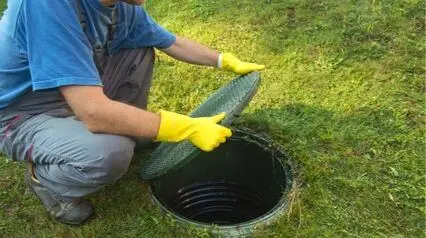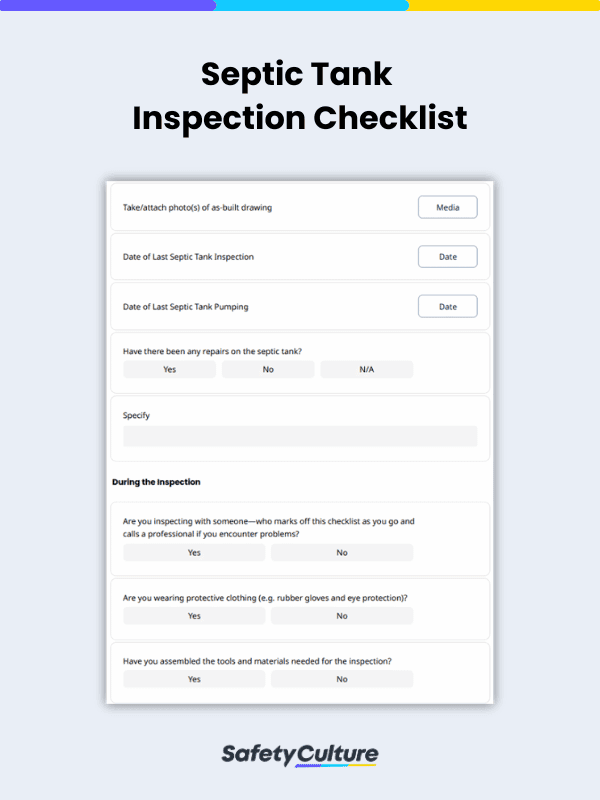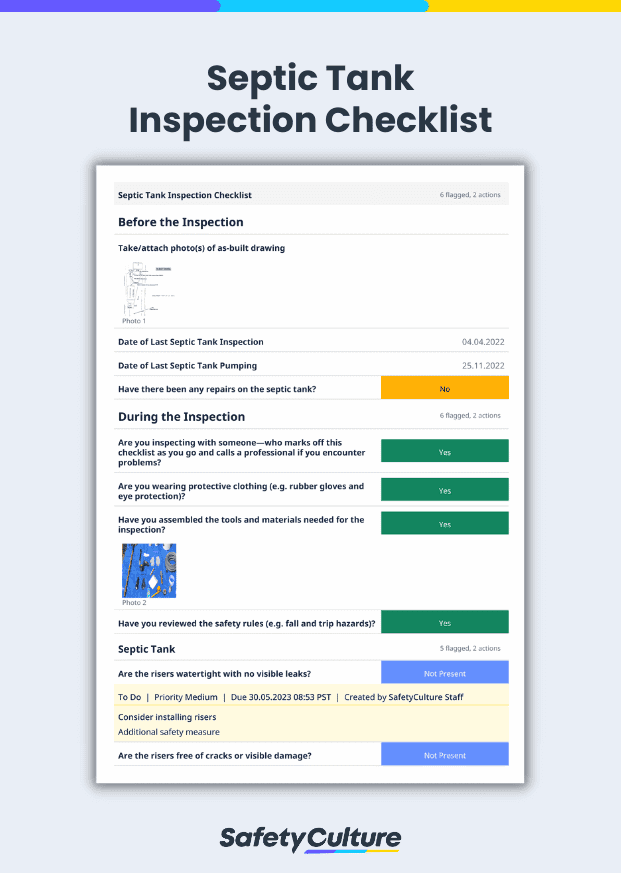What is a Septic Tank Inspection?
A septic tank inspection is a periodic assessment of a residential or commercial septic system’s condition and operation. Local health departments across the U.S. require homeowners and property managers to ensure the proper maintenance of their septic tank to increase its lifespan and protect groundwater from deadly contaminants. Home inspectors also report failed septic systems which can significantly reduce property value.
What is a Septic Tank Inspection Checklist?
A septic tank inspection checklist is used as a guide to properly maintain a septic system, prevent expensive repairs, and immediately take action to mitigate potential septic tank issues.
Inspection Requirements
A septic system can last for over 40 years if properly constructed, designed, and maintained. According to the Environmental Protection Agency (EPA), a septic tank inspection should be performed every 3 to 5 years. This can help in preventing any system problems such as contaminated groundwater which can lead to health and environmental issues. A septic tank inspection is performed with the following recommended requirements:
- workable site condition considering the outdoor temperature;
- check if there are signs of corrosion on the tank lids and baffle wall;
- assess the septic tank liquid level if it is backing up and if there are signs of leaks;
- visually inspect for clogs including the inlet and outlet baffles;
- check if the combined sludge and scum levels in the septic tank exceed 1/3 of the working volume of the tank, if so, it is recommended for pump-out;
- perform a load test to simulate the usage of water in a relatively short period of time; and
- install an effluent filter on the outlet baffle of the septic tank to protect the leaching field from suspended particles.
The Ultimate Guide to a Septic Tank Inspection
A septic tank inspection seems easy to perform, so property managers and home inspectors tend to do it on their own. However, even a septic tank inspection performed by licensed contractors can be fatal when done wrong. Here is what you should do before, during, and after a septic tank inspection:
Before an Inspection
1. Verify the septic system information
Ensure the local health department confirms when the septic tank was last pumped if there have been any repairs, and how old it is. Refer to previous inspection reports and validate the documents with the seller, realtor, or other reliable sources.
2. Determine the system type
Knowing exactly what the septic system is—gravity, pressurized, sand filter, mound, cesspool, or dry well—helps inspectors easily lookout for common defects. Taking note of the number of rooms in the property and how long it has been vacant or occupied also aids in the accuracy of inspection results.
3. Identify the location of the system
The septic system as-built drawing indicates specifically where the septic tank, opening lids, and observation pipes are located. Bring it onsite for an efficient inspection process and be accompanied by someone before commencing the septic tank inspection.
During an Inspection
1. Wear rubber gloves and eye protection
Inspectors should wear adequate protective clothing to avoid excessive inhalation of toxic fumes and direct contact with disease-causing bacteria. Prepare the proper tools for a septic tank inspection, including a tape measure for scum and sludge measurement. Prevent trip hazards during the inspection by keeping all tools in one area.
2. Keep open septic holes in front of you
Upon opening the lid, remember NOT to put your head inside nor enter the septic tank. Avoid turning your back from septic holes or leaving them open because it increases fall risks, leading to unwanted injuries (or even death).
3. Use an inspection checklist
Property managers, home inspectors, and licensed contractors should use mobile-ready septic tank inspection checklists to properly assess septic systems and view the report as soon as you complete the inspection. Easily follow each step—from taking or attaching photos of as-built drawings to capturing your digital signatures for validity and accountability. Identify common defects and training gaps from inspection results automatically collected over time.
After an Inspection
1. Ensure proper waste disposal
Inspectors should clean up after covering all openings and securing all lids. Sanitize all tools and wash your hands. To extend the good working condition of a septic system, minimize using chemical cleaners, lessen washing greasy or oily materials down the drain, and never put additives in the septic tank.
2. Address corrective actions
The septic tank should be pumped when defects are identified through visual observation, hydraulic load test, or dye test. Fix leaks and clogs before they worsen repair expenses in the future and replace the septic system after its usual 25-year lifespan.
3. Maintain records and inspection reports
Schedule regular maintenance checks to prevent excessive strain, microbial mat build-up, and poor soil conditions in the septic tank. Keep all inspection reports for future reference and analyze inspection results to mitigate potential septic system issues.
What is an Inspection Report?
A septic tank inspection report is a set of septic system analyses created by septic tank inspectors. It is provided after a thorough check of the operational condition of the septic system which includes the overall summary of physical issues found, repair needs, or system parts replacement. Check out our sample septic tank inspection report for your reference.




